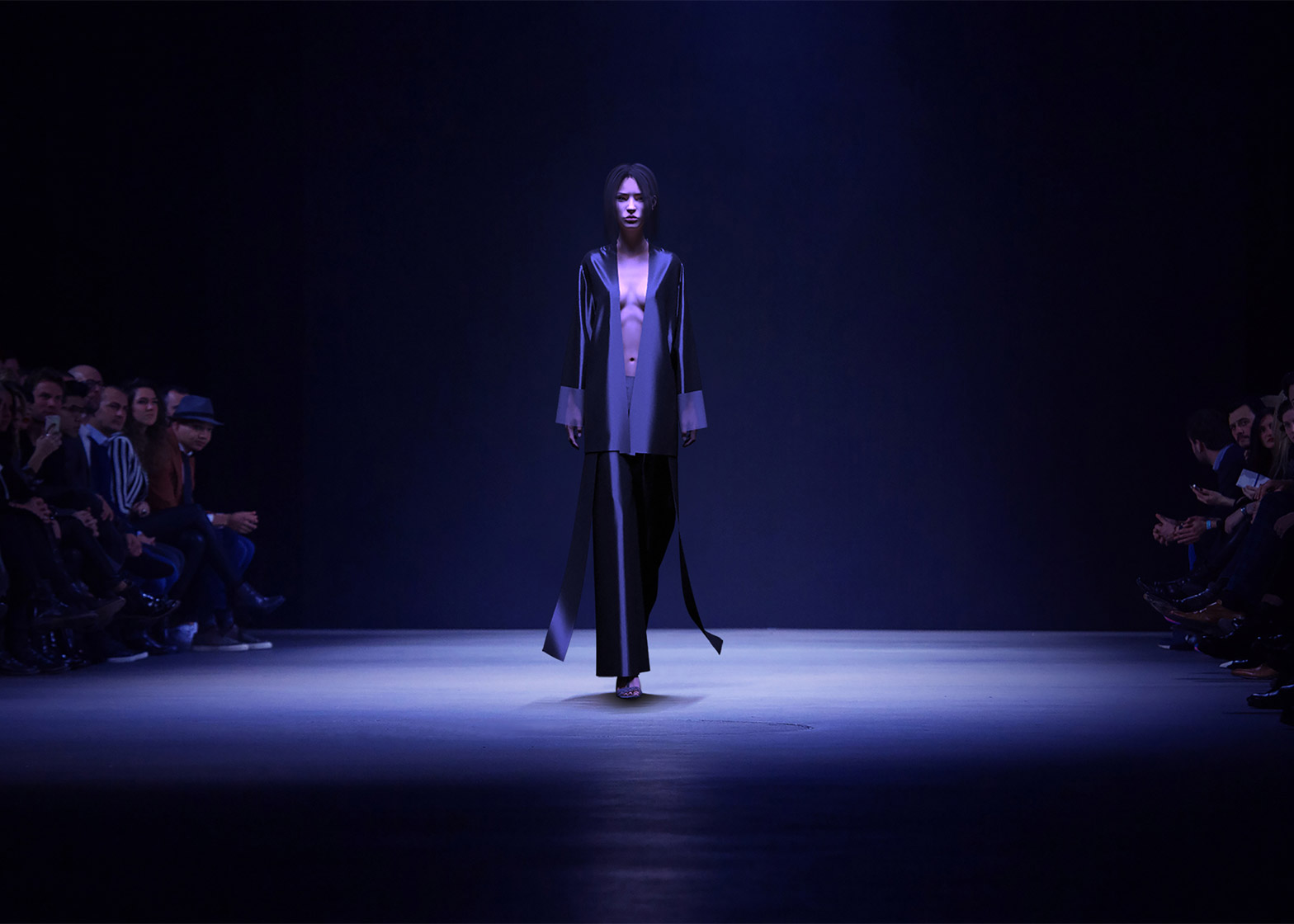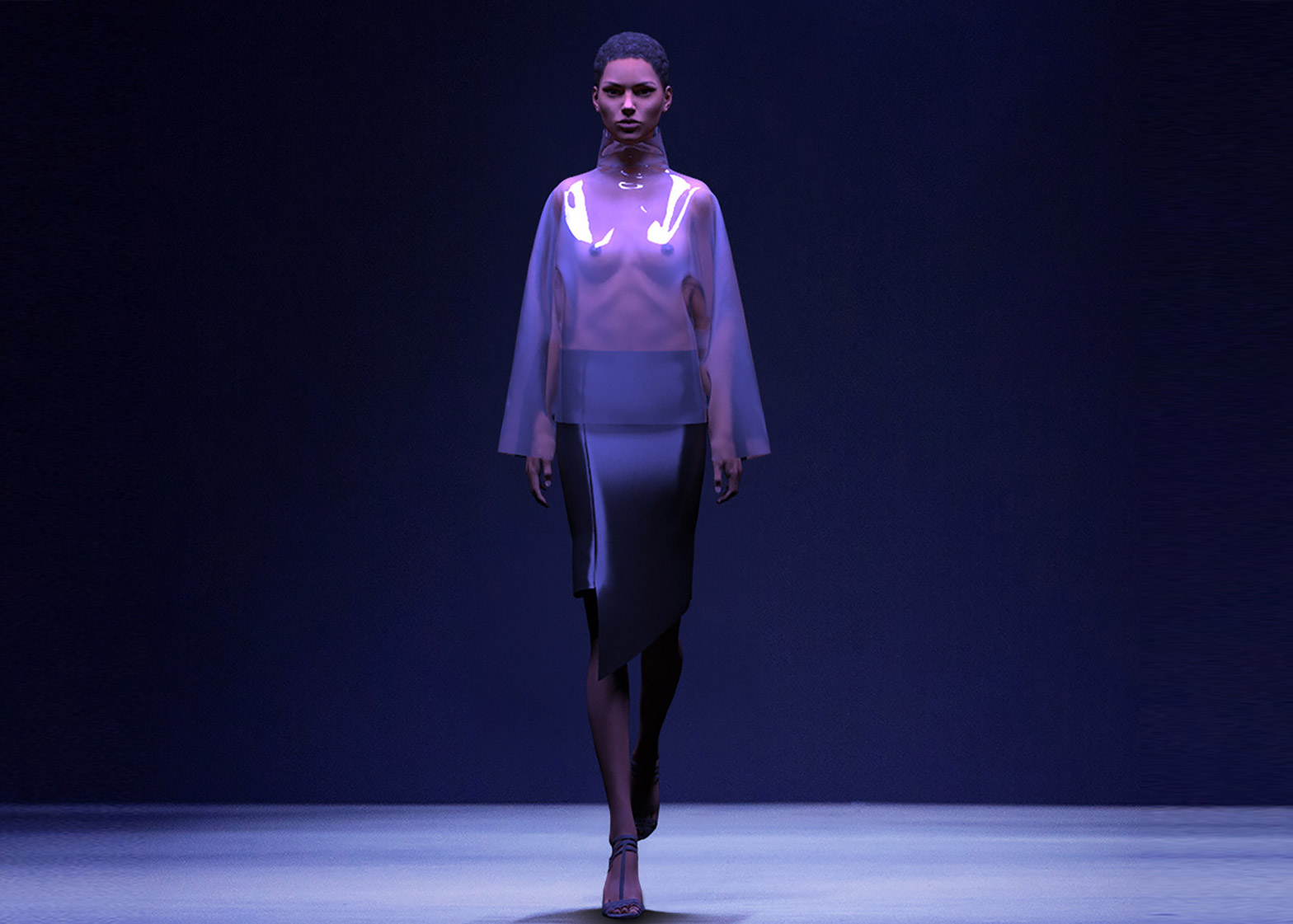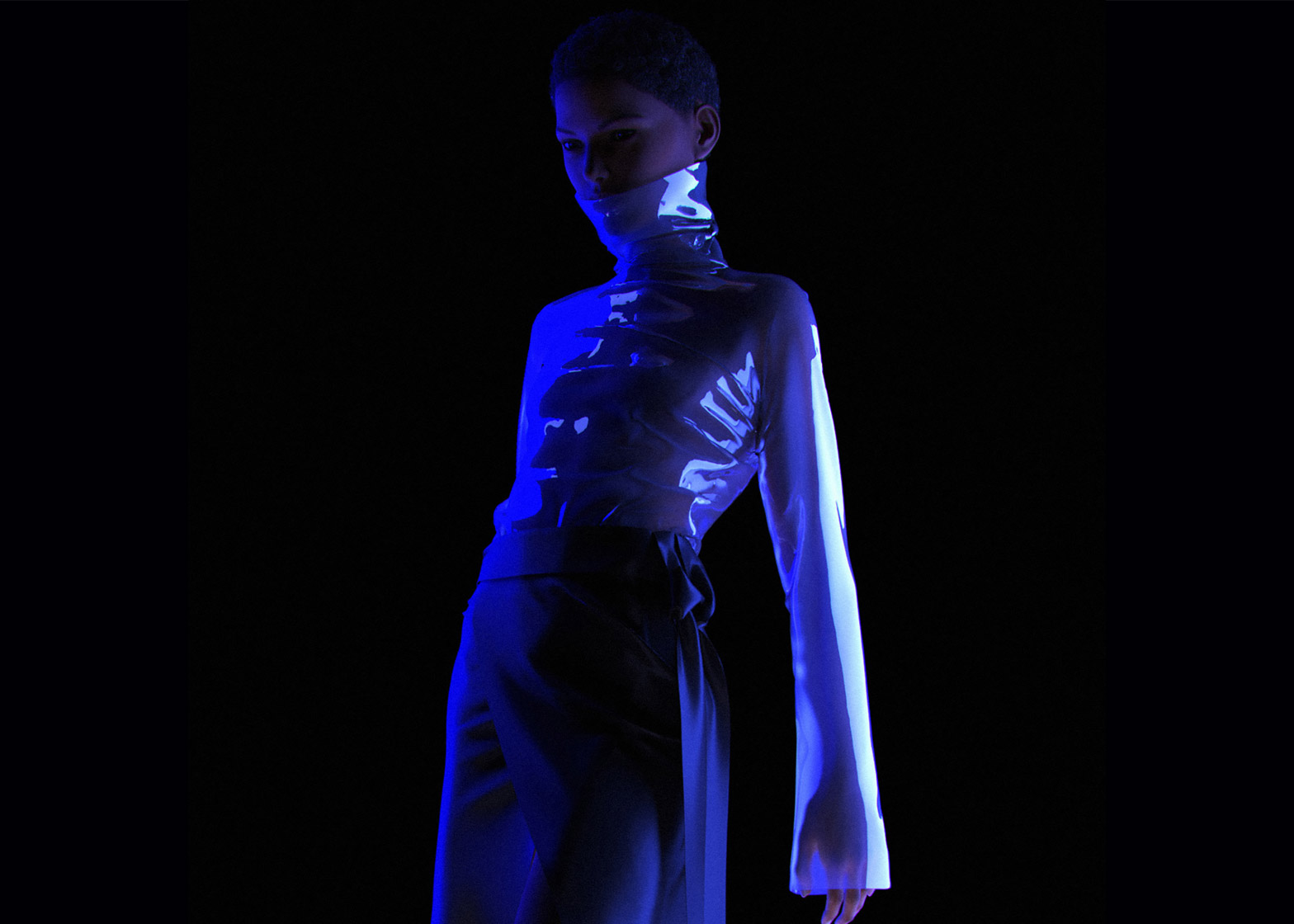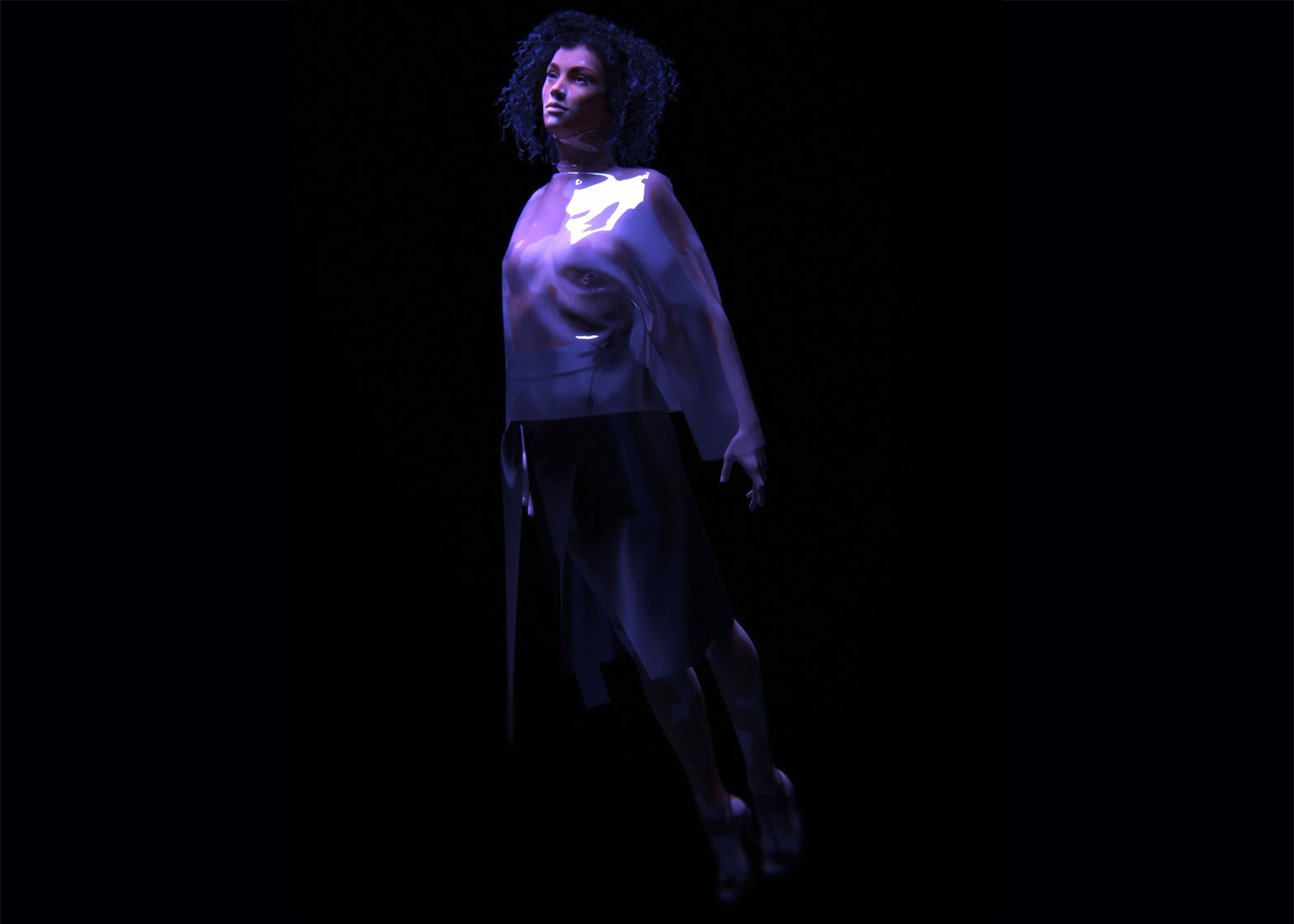French designer Clement Balavoine has created a digital-only process that lets fashion designers create and personalise a garment without ever touching fabric (+ slideshow).
Named Neuro, the method relies on a combination of several pieces of 3D software, used together to create clothes that are fitted on virtual models.
Laser-cutting machines or 3D printers can be used to produce the garments, giving designers more scope to digitally tailor pieces for individual customers.
"Design-wise, it allows any designer to create, visualise in 360 degrees and tweak their design in just a few minutes, without touching any physical fabric," Balavoine told Dezeen.
"They can create a garment, based on their body measurement with the fabric and colour they prefer," he added. "If we want to push further, we would scan the customer and design the garment directly onto the digital avatar of the customer."
Digital models are based on individuals scanned in real life, creating realistic bone structures that make for convincing poses.
Patterns are developed using software programme Marvelous Designer, which allows two-dimensional patterns to be drawn and cut in much the same way as real life.
Pieces are virtually sewn together, before a three-dimensional gravity simulator is applied to show how the garment will fit, and how the fabric falls and moves.
The material can then be customised with different textures and colours, using modelling programme 3ds Max, which also lets the user create "virtual photoshoots" by adjusting lighting and surroundings.
Balavoine was prompted to explore the design process by video game and movie concept artists, who often use this kind of software for character development.
"With Neuro, my goal was to build the bridge between the different creative worlds, and bring a reflection on the process of design in fashion – a different approach," he said.
"Step by step, these 3D models become closer to reality and it will be soon difficult to see the difference," added the designer. "I think that in the future, physical and digital models will have a specific place in the industry."
An exhibition held at New York's Metropolitan Museum of Art this year also explored how technology is impacting high-end fashion.
It featured creations made through computer modelling, 3D printing, laser cutting and other "machine-based" fabrication methods.





